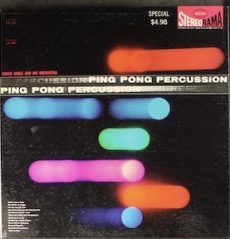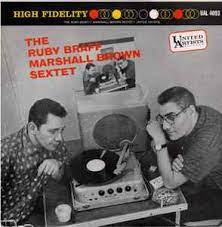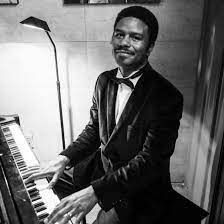
Daily Dose Of Jazz…
Al Klink was born on December 28, 1915 in Danbury, Connecticut. He began his professional career playing with Glenn Miller from 1939 to 1942 as a featured soloist, along with Tex Beneke, on the most well-known version of In the Mood. When Miller started playing in the U.S. military, he took a chair in Benny Goodman and Tommy Dorsey orchestras. He appeared in the 1941 film Sun Valley Serenade and 1942’s Orchestra Wives.
From 1952 to 1953 he played with the Sauter-Finegan Orchestra. Two years later he recorded his only session as a bandleader, performing six songs for a Bob Alexander album that won a Grammy Award. In the late 1960s to early Seventies, he was a tenor saxophone doubler on the staff of NBC’s Tonight Show Band under Doc Severinsen, where he was an occasional featured soloist.
He recorded with Mundell Lowe, Gerry Mulligan, Judy Holliday, Nelson Riddle, Phil Silvers, Cootie Williams and Rex Stewart. After a hiatus from recording and performing, he returned in 1974 when he began playing with the World’s Greatest Jazz Band. During the 1970s, he played with Glenn Zottola and George Masso, and continued playing until the mid-1980s, when he retired to Florida.
Swing tenor saxophonist Al Klink, who recorded ten albums as a sideman between 1956 and 1961, transitioned on March 7, 1991 at the age of 75 in Bradenton, Florida.
More Posts: history,instrumental,jazz,music,saxophone

Daily Dose Of Jazz…
David Louis Bartholomew was born Davis Bartholomew on December 24, 1918 in Edgard, Louisiana and initially learned to play the tuba, then took up the trumpet with lessons from Peter Davis, who also tutored Louis Armstrong. Around 1933 he moved with his parents to New Orleans, Louisiana where he played in local jazz and brass bands, including Papa Celestin’s. He played in Fats Pichon’s band on a Mississippi riverboat and took charge of his band in 1941. After a stint in Jimmie Lunceford’s band he joined the US Army during World War II and developed writing and arranging skills as a member of the 196th Army Ground Forces Band.
At the end of the war he returned to New Orleans and towards the end of 1945 he started leading his own dance band, Dave Bartholomew and the Dew Droppers, named after a now-defunct local hotel and nightclub, the Dew Drop Inn. Their popularity was a model for early rock ‘n’ roll bands the world over. In 1947, they were invited by club owner Don Robey to perform in Houston, Texas, where Bartholomew met Lew Chudd, the founder of Imperial Records.
His band made their first recordings for De Luxe Records in 1947 and their first hit was Country Boy, reached No. 14 in the national Billboard R&B chart in early 1950. Prominent members of the band, besides Bartholomew on trumpet and occasional vocals, were the saxophonists Alvin Tyler, Herb Hardesty, and Clarence Hall, the bass player Frank Fields, the guitarist Ernest McLean, the pianist Salvador Doucette, and the drummer Earl Palmer. They were later joined by the saxophonist Lee Allen.
Two years after their first meeting in Houston, Texas he was asked by Lew Chudd to become Imperial’s A&R man in New Orleans. Dave went on to produce singer Jewel King, and a young pianist Fats Domino, who went on to have great success with their collaboration. He went on to work at several labels including his own Broadmoor Records.
The 1970s and 1980s had Bartholomew leading a traditional Dixieland jazz band in New Orleans, releasing an album, Dave Bartholomew’s New Orleans Jazz Band in 1981. He produced numerous hit songs and was inducted into the Songwriters Hall of Fame, the Rock and Roll Hall of Fame, and the Louisiana Music Hall of Fame.
Trumpeter, bandleader, composer, arranger and record producer Dave Bartholomew, who was prominent in the New Orleans music scene and active in rhythm and blues, big band, swing music, rock and roll, New Orleans jazz, and Dixieland, transitioned from a heart attack in Metarie, Louisiana on June 23, 2019.
More Posts: aranger,bandleader,composer,history,instrumental,jazz,music,record producer,trumpet

Daily Dose Of Jazz…
Marshall Richard Brown was born on December 21, 1920 in Framingham, Massachusetts and graduated from New York University with a degree in music. He was a band teacher in New York City schools, and one of his school bands performed at the Newport Jazz Festival in the 1950s.
With George Wein, he went to Europe to look for musicians for the International Youth Band. In the late 1950s he started the Newport Youth Band and his students included Eddie Gomez, Duško Gojković, George Gruntz, Albert Mangelsdorff, Jimmy Owens, and Gabor Szabo.
He worked with Ruby Braff, Bobby Hackett, Lee Konitz, and Pee Wee Russell. Valve trombonist and teacher Marshall Brown transitioned on December 13, 1983 in New York City. He was 67.
More Posts: adventure,educator,history,instrumental,jazz,music,trombone

Daily Dose Of Jazz…
Reinhold Svensson was born December 20, 1919 in Husum, Germany. He recorded as a solo artist in 1941-1942, then joined the ensemble of violinist Hasse Kahn. In 1948, Putte Wickman took leadership of the group, and he worked with it until 1960 as a performer, arranger, and composer.
Reinhold appeared at the Paris Jazz Festival in 1949, worked with Arne Domnerus’s orchestra, and played with Charlie Norman in 1950-1951 as a duo under the names Ralph & Bert Berg and the Olson Brothers.
He also recorded with his own ensembles including Ragtime Reinhold. Domnerus, Jack Noren, Simon Brehm, and Thore Jederby were sidemen of his in the late 1940s and early 1950s.
Pianist, Hammond organist and composer Reinhold Svensson transitioned on November 23, 1968 in Stockholm, Sweden.
More Posts: composer,history,instrumental,jazz,music,organ,piano

Daily Dose Of Jazz…
Alfred Williams was born December 17, 1919 in Memphis, Tennessee but moved as a young child with his family to Chicago, Illinois. He studied classical piano and worked as a professional pianist from the age of 16, initially as leader of a 12-piece dance orchestra in local venues. In 1942, he formed a trio, the Three Dudes, and also played with trumpeter Henry “Red” Allen, clarinetist Jimmie Noone, and violinist Erskine Tate. He wrote arrangements for many Chicago bands.
His marriage to singer Audrey Hobbs brought about the couple performing together in the late 1940s as Alfred and Audrey. From the early Fifties he performed in New York City at venues including the Savoy Ballroom and the Metropole Cafe. He played in a Dixieland band, and also with Sam “The Man” Taylor, Jimmy Rushing, and others.
As a session musician Al appeared on Langston Hughes’ 1958 album Weary Blues. He toured Europe with Buck Clayton in 1959 and Johnny Hodges in 1961. He also recorded as the leader of a trio, accompanied the 1968 satirical revue The Establishment, and in the 1970s worked as arranger and pianist with the Deep River Boys.
Pianist Al Williams transitioned in New York on November 15, 1998 at the age of 78.
More Posts: history,instrumental,jazz,music,piano



